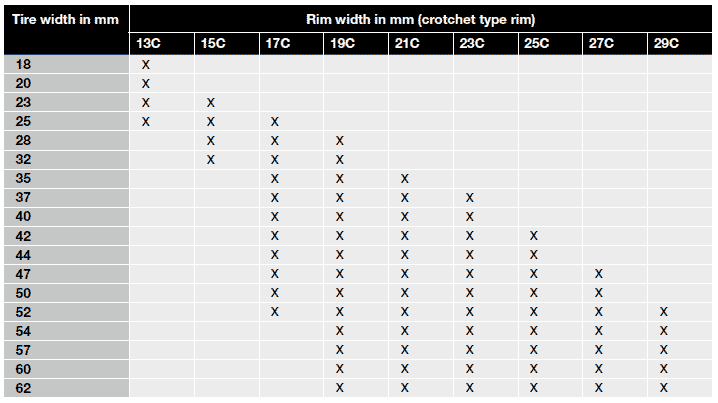Wide knobby tires use much lower pressures than narrow and smooth tires.
Image Credit: MilanMarkovic/iStock/GettyImages
With the wind in your face and the sun on your back, you can cycle along paved roads or swing off to enjoy an adventurous ride on a bike path or trail. Whether a mountain, comfort or hybrid, your bicycle has tires carefully selected to accommodate your riding needs.
The recommended tire pressure for your 26-inch bike tires varies with the tire type, intended use and the rider's weight.
Mountain bike 26-inch tires are 2 to 3 inches wide, with knobby tread to give you more traction on challenging terrain and help channel mud and debris away from the bike. Inflate these to 30 to 50 psi.
Video of the Day
Hybrid or road style 26-inch tires are less than 2 inches wide and have little to no tread to minimize rolling resistance and increase speed. You can inflate some models of these tires up to 95 psi, but 60 to 80 psi is a more common recommendation.
Use the lower end of your tire's recommended pressure range for rough roads or off-road, and the higher end for paved roads, according to SheldonBrown.com.
While some road riders deliberately over-inflate their tires, it's not recommended. Inflate tires to the manufacturer's recommended tire pressure to maintain the structural integrity of the tires.
Using low pressures on your 26-inch tires might improve traction significantly, but when the tire experiences significant jolts, you'll have a higher probability of pinch flats. Pinch flats occur when the inner tube gets caught between the tire and the rim. Over-inflating your tires increases your speed at the cost of stability and traction.
Fitness
How Much Air Should Be Put in a Bicycle Tires?
By Deborah Dunham
Fitness
What Is the Difference Between 32 Spoke & 24 Spoke Bicycle Wheels?
By Erica Leigh
Fitness
What Is the TPI on Bicycle Tires?
By Rogue Parrish
Because most bicycles carry more weight on the rear wheel, inflate your rear tire about 10 percent more than your front tire, according to SheldonBrown.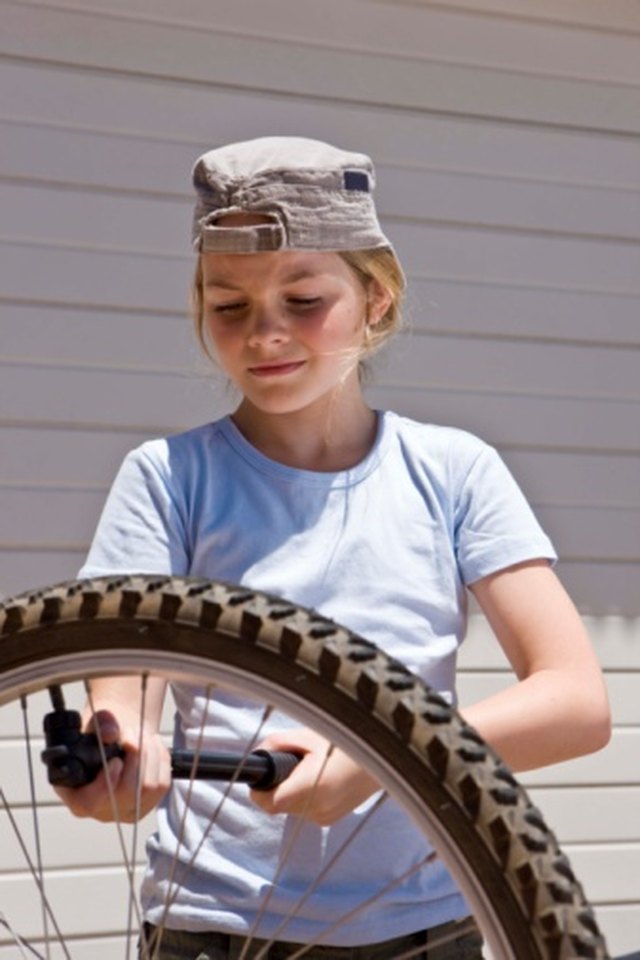 com. If you're carrying loaded panniers or other heavy cargo on a rear rack, or if you weigh significantly more or less than average, adjust your tire pressure accordingly.
com. If you're carrying loaded panniers or other heavy cargo on a rear rack, or if you weigh significantly more or less than average, adjust your tire pressure accordingly.
For example, Frank Berto, former engineering editor at Bicycling Magazine, recommends a minimum pressure of 25 psi on a 26 by 1-3/4 inch tire when the total weight of bicyclist, bicycle and bicycle load is about 154 pounds. If the total weight is about 265 pounds, the minimum pressure is 35 psi.
Brown notes that the rider's skill in riding can affect the ideal tire pressure. Experienced bicyclists will lift themselves slightly off the saddle when going over bumps, while new bicyclists might sit hard on the saddle, which increases the risk of pinch flats.
New cyclists may want to use a slightly higher tire pressure than they would otherwise, but keep it within the tires' stated minimum and maximum psi.
Having the right PSI in your bike tires can make a world of difference.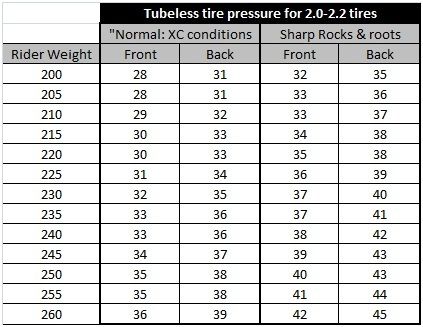 However, it would be an oversimplification to say that less air offers a more comfortable ride and more air makes you go faster. While this is true in many instances, the fact of the matter is that proper inflation for optimal performance depends on the individual rider and his or her bike.
However, it would be an oversimplification to say that less air offers a more comfortable ride and more air makes you go faster. While this is true in many instances, the fact of the matter is that proper inflation for optimal performance depends on the individual rider and his or her bike.
Every tire has a recommended psi printed on its side close to where it touches the rim. This is usually written as a range (for instance, "90 to 115 psi") since there are reasons why you'd want to be on the higher or lower end, which we'll get into shortly.
Basic rule of thumb if your tires happen to not indicate a recommended pressure: pump them up until they're firm but still slightly squeezable. Alternatively, there are generally-accepted ranges based on bike type:
| Bike tire type | PSI range |
| Kids' bike tires | 20–40 PSI |
| Narrow tires / road bikes | 80–130 PSI |
| Medium tires / hybrid bikes | 50–70 PSI |
| Thick tires / mountain bikes | 30 PSI (off-road) 50 PSI (on-road) |
Road bikes and tires are built for speed over smooth surfaces. Higher air pressure lets them roll easier and faster. A typical range for these would be between 80 and 130 psi, although racers can sometimes go as high as 160 psi. Quick tip if you're caught inflating a road tire without a gauge and need to ballpark it: at 100 psi, a tire can barely be compressed with your thumb.
Higher air pressure lets them roll easier and faster. A typical range for these would be between 80 and 130 psi, although racers can sometimes go as high as 160 psi. Quick tip if you're caught inflating a road tire without a gauge and need to ballpark it: at 100 psi, a tire can barely be compressed with your thumb.
Unlike roadies, mountain bikes are flying over loose, bumpy terrain. Tires with too much air lead to too much bounce, making for a jolty ride. Lower pressure helps with shock absorption while also giving you more traction since more of the tire comes into contact with the ground. MTB manufacturers recommend between 30 and 50 psi on most of their bikes since this is a nice balance between on-road (closer to 50) and off-road (closer to 30) riding.
Hybrid bike tires require pressure levels between those of road and mountain bikes. This is usually in the 50 to 70 psi range. Kids' bikes have the lowest recommended inflation, typically 20 to 40 psi. Keep in mind that these are called "recommendations" for a reason, though. A number of factors go into the inflation process beyond just your style of bike.
Keep in mind that these are called "recommendations" for a reason, though. A number of factors go into the inflation process beyond just your style of bike.
Which leads us to…
Because nothing in life is ever as simple as it should be, we've included a few more things to ponder when it comes to making sure everyone's tires are in good shape for their next ride.
As a general guideline, more weight = more pressure. Whether you're competing in the Tour de Whatever or shredding up the backcountry, heavier riders should use a higher psi than lighter ones to see the same performance in their tires. For perspective, someone weighing in at 200lbs will probably want to pump in around 20 more psi than someone who's 160. There's no real slide rule for this, so just play around with the pressure and see what feels best for you. Also keep in mind that rear tires tend to carry more weight than those in front, so adjust accordingly as necessary.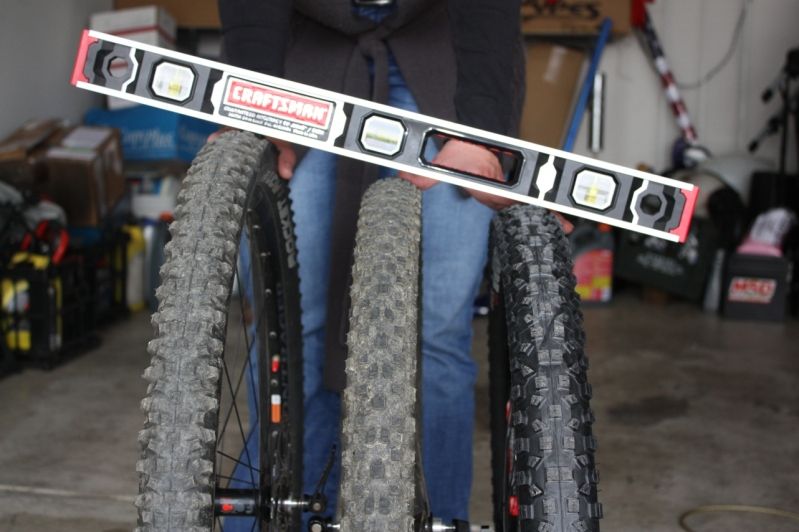
We know through physics that temperature affects air pressure. So, all else being equal, people biking in Miami in August are going to have higher pressure in their tires than people biking in Boston in January. In addition to weather, sustained deceleration using rim brakes generates friction that can increase temperatures inside the tube significantly. Fortunately, they also cool off relatively quickly, but it's something to keep an eye on during long descents. It may also be worth mentioning to your burgeoning roadster as he or she is learning the basics of hand braking.
In short, don't do either. If you overinflate, you run the risk of blowing the tube either while pumping or while riding due to sudden or constant impact. If underinflated, the low pressure could cause pinch flats. This occurs when the tube becomes squeezed between the rim and tire casing by hitting a bump with an underinflated wheel.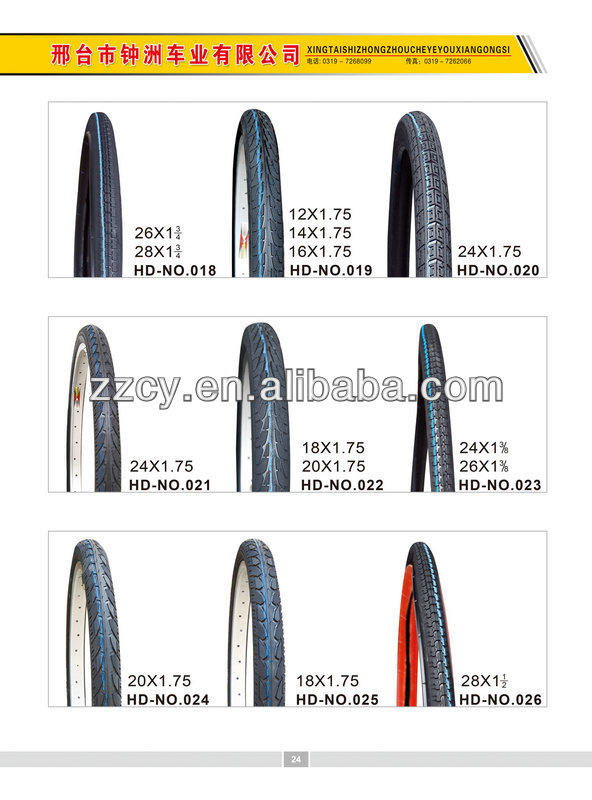 Not only does this damage the tire, it can also hurt the rim. Plus, flat tires slow you down and make you pedal harder, which is just no fun.
Not only does this damage the tire, it can also hurt the rim. Plus, flat tires slow you down and make you pedal harder, which is just no fun.
"How often should I inflate my tires?" is a common question among many casual bikers. The answer depends on how often and how hard you ride. Some people break out the pump every few days, others once a week, and still others even less regularly than that. Even if you or your kids have left your wheels in the garage for months, air tends to seep out slowly, anyway. Therefore, as a bike-safety best practice, just like a car it's certainly never a bad idea to check your tires before each ride. Especially if it's been a while.
The pro's choice, floor pumps do a great job. They are easier to pump and attach, and will pump your tires up much quicker than a hand pump will. Some come with gauges, which eliminate 1) the need to switch back and forth between a pump and standalone gauge, or 2) if you're really lazy, outright guesswork.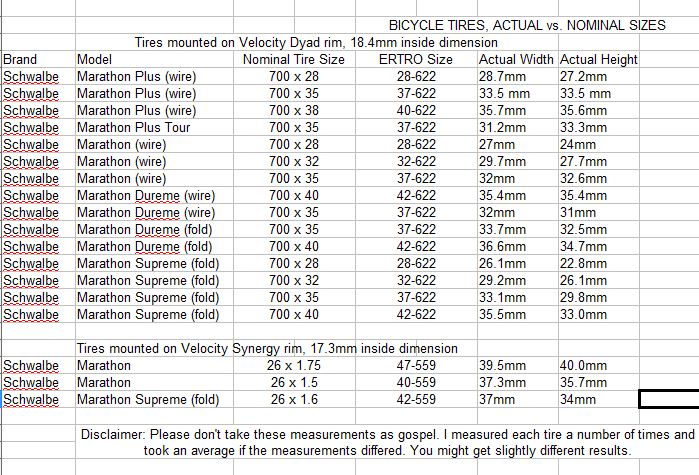
However, some expert cyclists are cautious of floor pumps with gauges, as the accuracy of the gauge can svary and may be off by as much as 10 PSI. On the plus side, if the gauge is consistent you can calculate the difference and adjust your target PSI to compensate.
It may be tempting to simply use the air compressor at your neighborhood Exxon, but these are less than accurate and can often overinflate your tires (it's a gas station, they're meant for cars). For serious riders whose circuits take them far from home, a small hand pump can help you change a flat on the fly. Carbon dioxide inflators accomplish the same thing if you're an air-in-the-can kind of guy.
Essential for any enthusiastic cyclist, hand pumps are harder work to fill the tire with, and aren't as quick. But they're transportable, so you always have your pump with you. It's simply foolish to embark on any long distance bike ride without your trusty hand pump and puncture repair kit.
So there you go, we hope this quick guide to bike PSI pressure was useful. To recap: figure out what feels most comfortable based on your particular cycling style. Go with that. Keep an eye on your pressure, and check it before every ride. You'll get a feel for it over time. Like, literally.
It seems that there is nothing easier than just taking the pump, pump up the tires and go further. However, knowing what pressure should be in the tires of a bicycle, you can provide yourself with a more comfortable ride. The roll of the bike, the cross-country ability of the bike and control depend on it.
First of all, here are a number of fundamental rules that every novice cyclist needs to know:

This raises the question: what pressure to pump in tires? It is worth knowing that the indicator is measured in atmospheres: BAR or Psi. In this case, 1 BAR is 14.7 Psi. Bicycle tires always have an allowable range written on them. Most often it is displayed in Psi. We will present a table with averages for a statistical cyclist. The parameters are indicated for skiing without extreme sports in the standard mode on dirt or asphalt:
On average, the value for bicycle wheels is set at 35-48 Psi. This is approximately 2.38-3.26 BAR. This range provides better handling of the bike while riding, as well as good tire grip with the road surface. With an increase in pressure to 3.4-4.08 BAR (50-60 Psi), driving comfort will decrease, since the contact of the wheel with the surface will be much less.
With a low pressure in the tire: 1.9-2. 17 atmospheres (28-32 Psi), the wheel chamber will be very vulnerable to penetration. When hitting a stone or being hit, it is pinched between the rim and the curb or stone. After a collision, a “snake bite” is formed - a puncture that is quite difficult to remove. It is possible that the rim itself will be damaged, resulting in either a costly repair or replacement. On steep turns, the tire can “break off” at all, after which the cyclist necessarily falls, and the camera is badly damaged.
17 atmospheres (28-32 Psi), the wheel chamber will be very vulnerable to penetration. When hitting a stone or being hit, it is pinched between the rim and the curb or stone. After a collision, a “snake bite” is formed - a puncture that is quite difficult to remove. It is possible that the rim itself will be damaged, resulting in either a costly repair or replacement. On steep turns, the tire can “break off” at all, after which the cyclist necessarily falls, and the camera is badly damaged.
Beginning cyclists often make mistakes in choosing the optimal pressure when inflating the wheels. There is an opinion that the stronger the pump, the better. However, this is absolutely wrong. Depending on the type of bike, tire, weight of the rider and his route, it is necessary to adjust the pressure. To do this, you should buy a quality pump with a pressure gauge. With it, you can pump up the recommended pressure and ride with maximum comfort.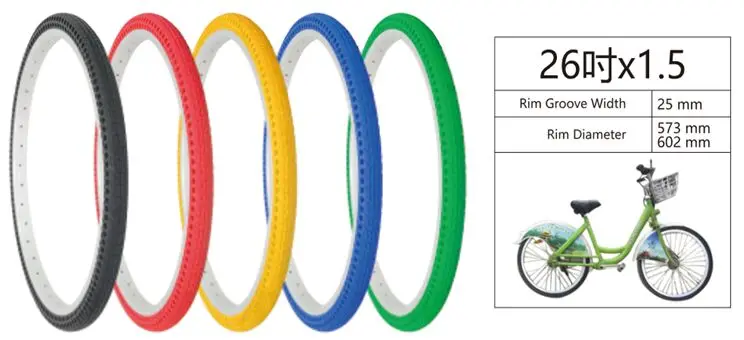 To do this, consider the following factors:
To do this, consider the following factors:
 A wide rim holds the tire better than a narrow one. Therefore, low tire pressure can be made. There will be no bends.
A wide rim holds the tire better than a narrow one. Therefore, low tire pressure can be made. There will be no bends. Fully inflated tires give you more control on loose surfaces like snow or sand. In extreme heat, it is best not to inflate the tires too hard. Tires can overheat from heat and high speed. In winter, on the contrary, you need to pump harder. This will prevent damage from the cold. Road bikes need to be pumped up to 6.46-9.18 atmospheres. In the tires of these bikes, the air volume is much lower than in mountain bikes.
Related materials:
Bicycle storage in a small apartment
How to assemble a mountain bike
Chain - how long does it last or how not to sign the death warrant for the stars!
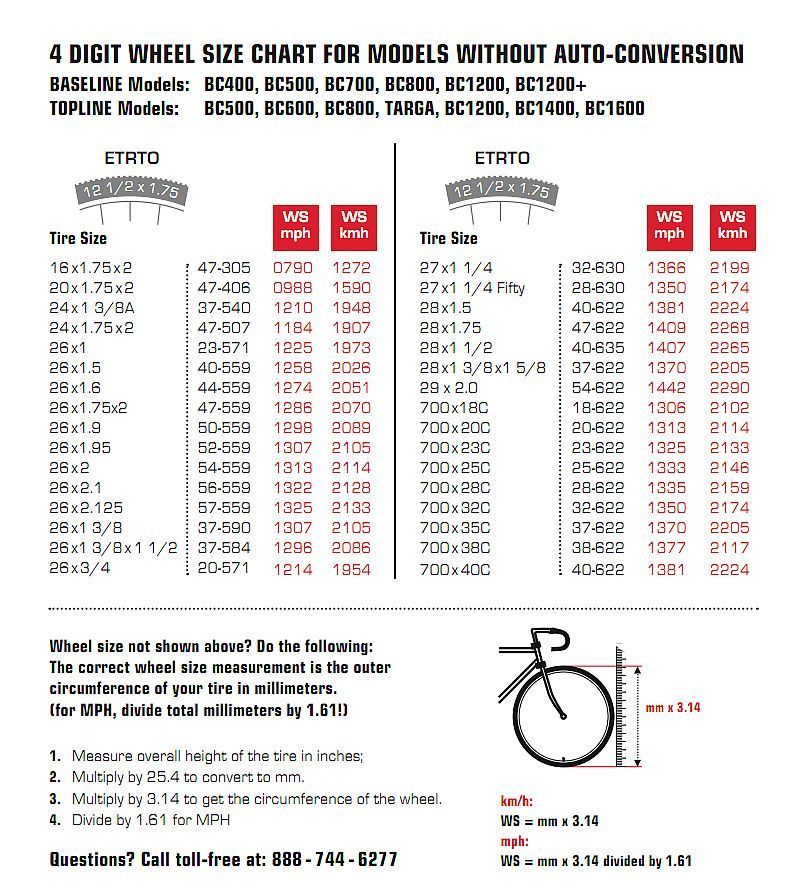 The service life of the bicycle, the speed of riding, the degree of tire wear, safety, control of the two-wheeled friend depends on how the wheels are inflated.
The service life of the bicycle, the speed of riding, the degree of tire wear, safety, control of the two-wheeled friend depends on how the wheels are inflated.
Many cyclists believe that inflating the tires is only necessary for a good bike ride. However, flat tires have a wider area of contact with the road, which means that grip will be better, but it will be very difficult to accelerate to a speed of 30-35 km / h on such tires.
When inflating your tires, you should always consider the type of terrain or surface you will be driving on. If the walk is supposed to be on an asphalt road, the tire pressure of the bicycle should be close to the maximum allowable value. Elastic wheels on a flat surface will provide a smooth rolling and high speed of movement.
For cross-country riding with unpaved paths, it is better to set the tire pressure to medium tolerable, so that you can ride long distances in comfort and convenience. At high pressure, the grip of the wheel with the road will be minimal, respectively, all holes, pebbles, and bumps on the road will be sensitive. And with flat tires, the likelihood of damage to the wheel or puncture of the chamber increases.
At high pressure, the grip of the wheel with the road will be minimal, respectively, all holes, pebbles, and bumps on the road will be sensitive. And with flat tires, the likelihood of damage to the wheel or puncture of the chamber increases.
In order to protect yourself on the road, as well as to keep the bicycle or its individual parts intact, you need to know exactly the lower and upper limits of permissible values, to what pressure the bicycle wheels can be pumped.
Information about tire pressure gives you an advantage when cycling:
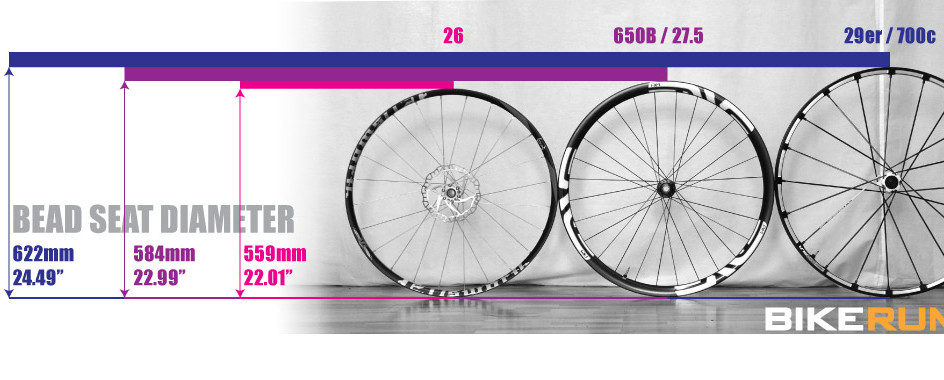
Forget about the old "grandfather" way to check the wheel by pressing with your fingers. No need to rely on tactile sensations, trying to feel with your hand the degree of rubber penetration on the tire. The air leaves the wheel gradually, through the pores in the rubber. Within 2-3 weeks, the pressure decreases by 0.1-0.2 atmospheres, but you cannot determine this with your fingers. The exact value at any time will help determine the pressure gauge that every cyclist should have in his arsenal. With its help, it is simple, with a minimum error, the level of pressure in bicycle tires is measured. A pump with a pressure gauge (floor or manual) will become an indispensable tool for cyclists.
There are three standard values in which bicycle tire pressure is measured.
kPa = 14.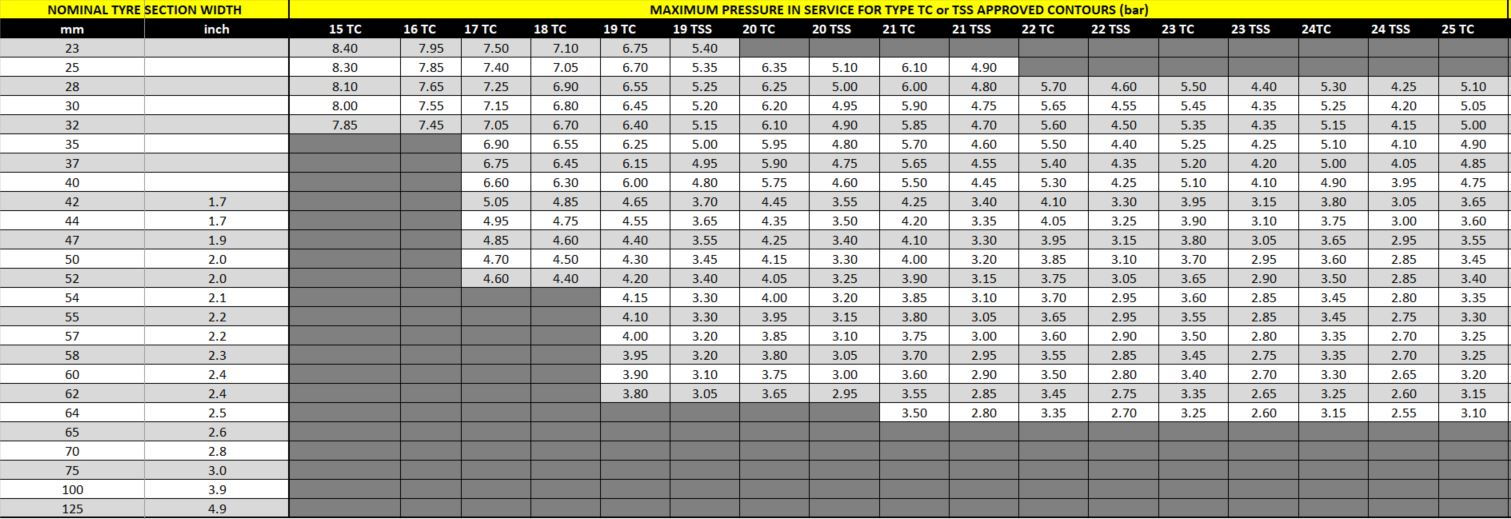 504 PSI
504 PSI
All these units are used to some extent - in different countries, by different manufacturers. For residents of Russia and the post-Soviet space, the change in bars is more familiar, since this unit is clearly associated with the pressure of the 1st Earth's atmosphere at ocean level. In America and Western Europe, a popular unit is PSI, as they actively use pounds and inches in measurements. Pascals are the least used unit of measurement, but the most modern. Some bicycle manufacturers write data on the wheels about the allowable pressures in all three systems.
Manufacturers indicate on the sidewall of the tire how many atmospheres to pump the bicycle wheels. Specifies the range within which the owner of the "iron horse" determines the desired values, depending on the specific factors of riding his bike. Values in the range are labeled from min to max, in two or all three dimensions. Numbers up to 10 are atmospheres (or BAR), tens-hundreds are PSI, and six-digit values \u200b\u200band with the prefix “k” / kilo are Pascals.
When inflating a tire, you must strictly follow the manufacturer's recommendations and try not to go beyond both the minimum and maximum pressure levels indicated on the tire. Moreover, it is better to leave a small margin of 0.2-0.5 BAR, both in one direction and in the other, so that the tire does not burst.
The pressure in the wheel is kept by the tire, not the tube, so there is no single standard for its value. There are several significant factors that determine how much you need to pump the wheels on a bicycle.
The type of tire is determined by the surface of the track on which the cyclist will predominantly ride. Accordingly, the level of inflation of the bicycle wheel will be different. There is a direct dependence on the roughness of the tread and the width of the wheel - the more lugs and the wider the wheel, the lower the pressure should be. Empirically, cyclists quickly determine how many atmospheres should be in the tires of their bicycle
Many cyclists do not think about the fact that air temperature affects the pressure level in bicycle tires.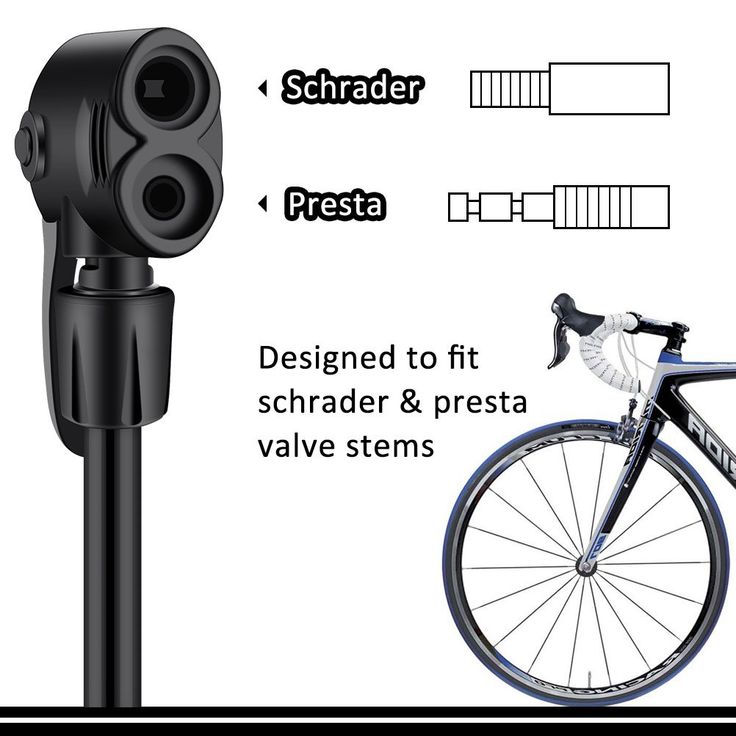 From the course of school physics, we recall that when heated, bodies expand. This means that in hot sunny weather, the pressure inside the air chamber will increase without additional pumping. Conversely, on cold winter days, a decrease in tire pressure is quickly felt due to low temperatures. So, when going for a bike ride in the cold season, the pressure indicators need to be adjusted a little higher than usual, and in the summer heat, let the air out a little. It is worth noting that when going on a bike ride, you should always take into account the weather conditions.
From the course of school physics, we recall that when heated, bodies expand. This means that in hot sunny weather, the pressure inside the air chamber will increase without additional pumping. Conversely, on cold winter days, a decrease in tire pressure is quickly felt due to low temperatures. So, when going for a bike ride in the cold season, the pressure indicators need to be adjusted a little higher than usual, and in the summer heat, let the air out a little. It is worth noting that when going on a bike ride, you should always take into account the weather conditions.
It is important to consider the load on the bike created by the weight of the rider, especially the fact that most of it is on the rear wheel. Therefore, the degree of its pumping should be slightly higher than the front, the optimal difference is 10%.
To calculate the optimal tire pressure for a bicycle, given the weight of its rider, you can use the table:
Rider weight (kg) Pressure (atmosphere) Pressure (PSI)
The nature, riding style and type of bike also affect tire pressure. Buyers who prefer an active pastime often opt for mountain bikes with 26-inch wheels, which ride well both on city streets and in rough terrain.
Buyers who prefer an active pastime often opt for mountain bikes with 26-inch wheels, which ride well both on city streets and in rough terrain.
To understand to what pressure to inflate the wheels of a bicycle, it is necessary to take into account the features of both the bike itself and other, at first glance, weightless factors. For example, weaving threads on a tire, rim thickness, driving style. The likelihood of a tire coming off a wide rim is much less than a narrow rim, because a wider rim will hold the tire better than a thin one. Mountain biking already by its name suggests the presence of a difficult surface on the track, with possible obstacles and bumps. The driving style is more aggressive than on a smooth, calm trajectory, it obliges you to increase the tire pressure to a level slightly less than the upper limit.
The diameter of the wheel will also affect the selection of the optimal pressure value, since the larger it is, the higher the volume of air pumped will be.